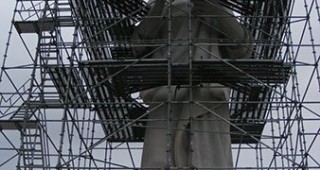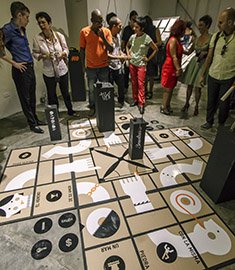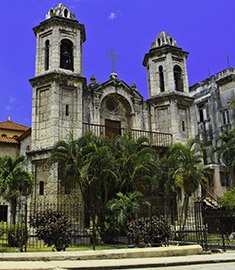
La Moderna Poesía LH  4
4
Owned by the López Serrano family–who evidently had a preference for Art Deco–this bookstore is a sample of how the sober interplay between lines and volumes can achieve a discreet elegance highligh …
 Art DecoAdmission: FreeObispo y Bernaza, Habana Vieja
Art DecoAdmission: FreeObispo y Bernaza, Habana Vieja 
Barrio Chino LH  4
4
Located just a few meters away from El Capitolio, this is the largest and most important Chinatown in the New Continent. According to historian Julio Le Riverend, between 1847 and 1874, around 150,000 …

Fundación Havana Club LH  4
4
One block southeast of Plaza de San Francisco, on Avenida del Puerto, stands the ochre-colored former mansion of the Conde de la Montera. Beyond its ornate doorway is a promotional center—the Museo de …

Factoría Habana LH  4
4
Factoría Habana is an experimental center for present-day artistic creation. The institution, which is ascribed to the City Historian’s Office, seeks to become a bridge between Latin American and Euro …

Sala Polivalente Kid Chocolate LH  4
4
This is one of the 67 facilities especially built for the Havana 1991 Pan-American Games. It was named after Eligio Sardiñas, also known as Kid Chocolate, Cuba’s finest amateur boxer ever. The sports …

Galería Habana LH  4
4
This gallery opened in 1962 to promote Cuban talent. Artists such as Wifredo Lam, René Portocarrero, Mariano Rodríguez and Amelia Peláez have shown their work here, establishing this gallery as one of …

Cristo de La Habana LH  4
4
This majestic representation of Jesus Christ, only four decades old, is part of the landscape that characterizes the entrance to the Havana harbor. It is 20 meters tall, weighs 320 tons and consists o …

Galería Victor Manuel LH  4
4
This gallery offers a nice selection of mainstream decorative modern paintings, some of which could be considered true works of art. Given its location and popularity, high pric es are to be expected. …

Parque Lenin LH  4
4
Approximately 25 kilometers south of Havana is Parque Lenin, inaugurated on April 22, 1972 by Fidel Castro on the initiative of Celia Sánchez. The huge bust of Lenin, carved in 1982 by Soviet sculptor …
 Post 1959Open: 9am-5:30pm Wed-Sun except Jul-Aug 9am-5:30pm Tue-Sun100, esquina Cortina de la Presa
Post 1959Open: 9am-5:30pm Wed-Sun except Jul-Aug 9am-5:30pm Tue-Sun100, esquina Cortina de la Presa 
Casa de los Artistas LH  4
4
Several of Cuba’s most famous artists have their studios here, including Pedro Pablo Oliva, Zaida del Río and Roberto Fabelo. Contemporary art exhibitions are held on the ground floor.













